“North American lions, cheetahs and short-faced bears: Those are just a few fearsome critters from 25,000 years ago paleontologists already might have found in their first excavation of a bizarre northern Wyoming cave in 30 years. Good fossils also come in small packages: Exquisite rodent bones best examined by microscope, or even snippets of genetic material from long-extinct species, could be in their haul.
The only way in or out of Natural Trap Cave is a 15-foot-wide hole in the ground that's almost impossible to see until you're next to it. Over tens of thousands of years, several thousand insufficiently wary animals plummeted more than 80 feet into the chilly, dim, cathedral-like cavern. Their bones lie entombed, layer upon layer, in sediment as much as 30 feet deep.
Over the past two weeks, bucket after bucket, by rope and pulley, some 10-20 paleontologists, their assistants and a few spelunking experts have been hauling bones and bone-bearing sediment up into the sunlight. They used screens to sift out tiny remains from the dirt. “It's an incredible site. It definitely is one of the most significant sites that BLM manages and it will provide very, very important information”, said Breithaupt, a paleontologist for the U.S. Bureau of Land Management. Scientists hope the cave's high humidity and temperatures that never top the 40s might even preserve genetic material of extinct animals from the days when massive ice sheets last frosted over much of the North American landscape”. – The Associated Press
The only way in or out of Natural Trap Cave is a 15-foot-wide hole in the ground that's almost impossible to see until you're next to it. Over tens of thousands of years, several thousand insufficiently wary animals plummeted more than 80 feet into the chilly, dim, cathedral-like cavern. Their bones lie entombed, layer upon layer, in sediment as much as 30 feet deep.
Over the past two weeks, bucket after bucket, by rope and pulley, some 10-20 paleontologists, their assistants and a few spelunking experts have been hauling bones and bone-bearing sediment up into the sunlight. They used screens to sift out tiny remains from the dirt. “It's an incredible site. It definitely is one of the most significant sites that BLM manages and it will provide very, very important information”, said Breithaupt, a paleontologist for the U.S. Bureau of Land Management. Scientists hope the cave's high humidity and temperatures that never top the 40s might even preserve genetic material of extinct animals from the days when massive ice sheets last frosted over much of the North American landscape”. – The Associated Press
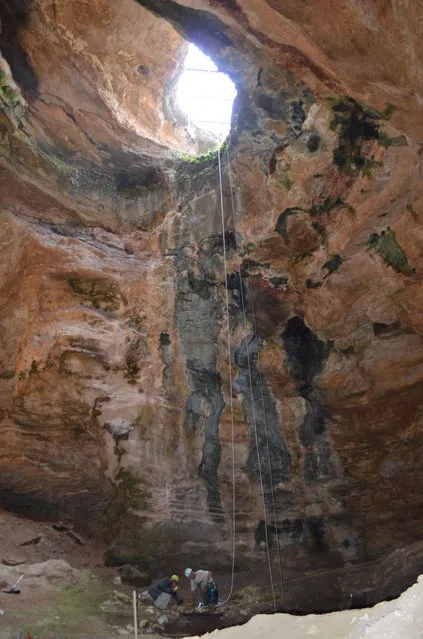
This July 2014 image provided by the Bureau of Land Management shows the interior of the Natural Trap Cave in north-central Wyoming. The cave holds the remains of tens of thousands of animals, including many now-extinct species, from the late Pleistocene period tens of thousands of years ago. Scientists have resumed digging for the first time in more than 30 years. (Photo by AP Photo/Bureau of Land Management)
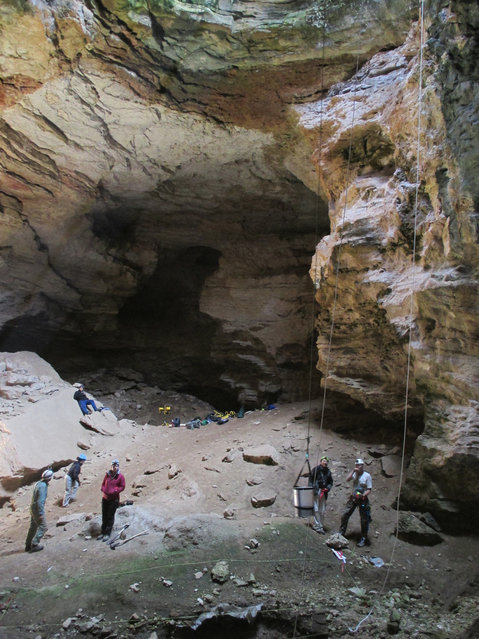
This July 2014 image provided by the Bureau of Land Management shows researchers in the interior of the Natural Trap Cave in north-central Wyoming. (Photo by AP Photo/Bureau of Land Management)
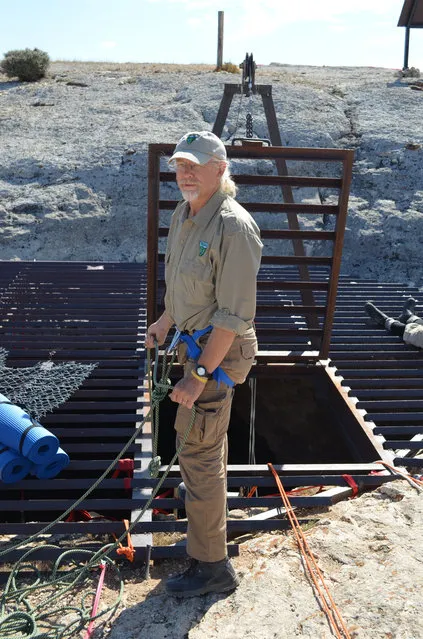
This July 2014 image provided by the Bureau of Land Management shows BLM Paleontologist Brent Breithaupt at the mouth to the interior of the Natural Trap Cave in north-central Wyoming. (Photo by AP Photo/Bureau of Land Management)
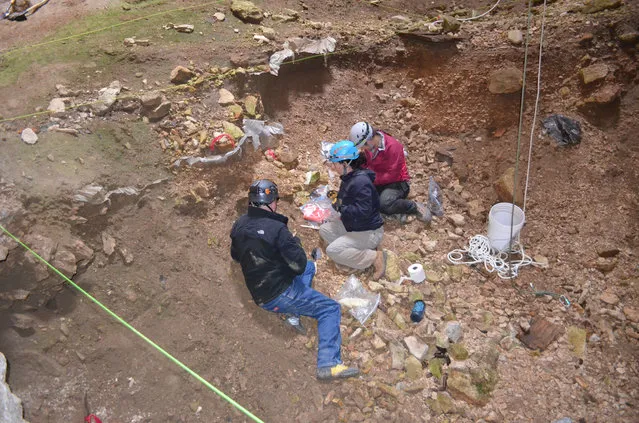
This July 2014 image provided by the Bureau of Land Management shows Justin Sipla, from left, Julie Meachen, and Jenna Kaempfer collecting samples for analysis inside the Natural Trap Cave in north-central Wyoming. (Photo by AP Photo/Bureau of Land Management)
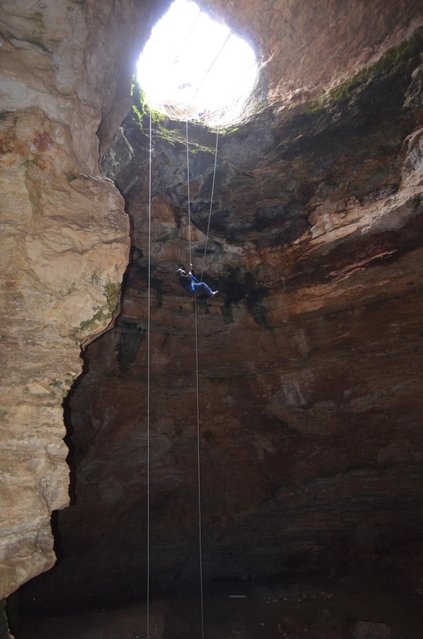
Justin Sipla ascends a rope 80 feet to reach the mouth of Natural Trap Cave in north-central Wyoming after working on the cave's floor in this July 2014 image. (Photo by AP Photo/Bureau of Land Management)
10 Aug 2014 10:35:00,
post received
0 comments
